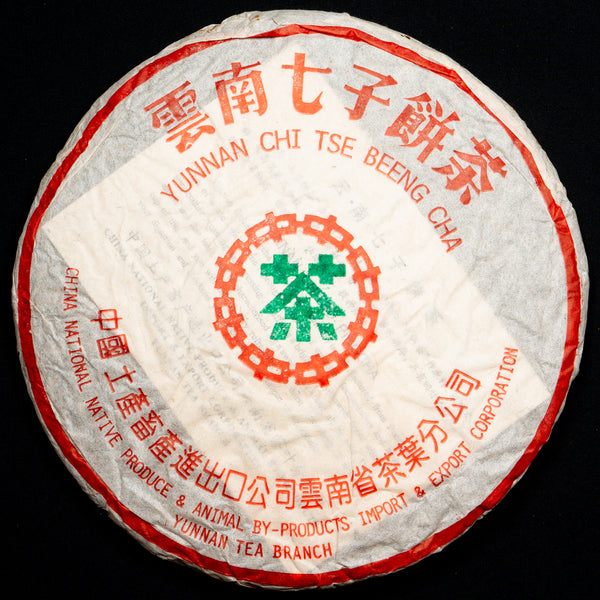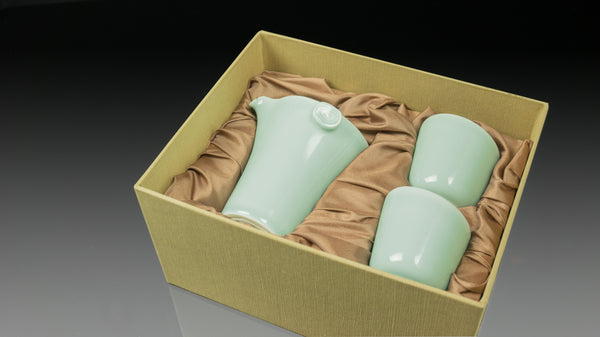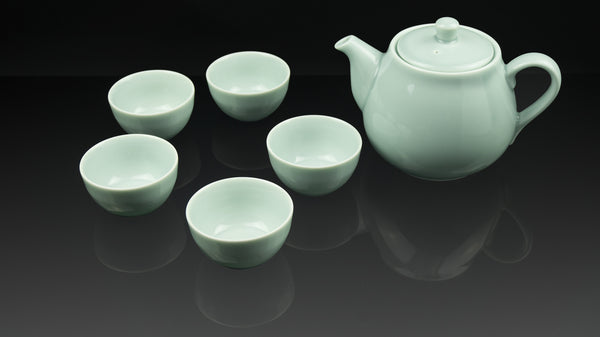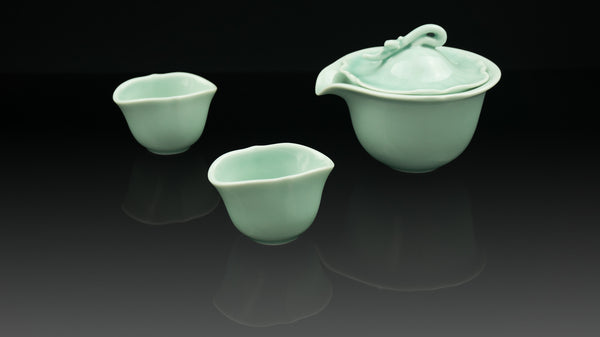Classical Oriental Beauty Oolong Tea - Spring 2017
Taiwan Sourcing




A fortunate surprise find for us this summer, this is a classic-styled Oriental Beauty we obtained in a very limited quantity. This oriental has everything you want from a oriental beauty - conspicuous white feather, distinctive flavour thanks to the bug bitten effect and the master's hand.
High quality Oriental Beauty has an extremely high price due to limited production, more complicated processing method, and a higher labor cost. Every single leaf must be picked when it is still a bud so it will be tender enough to be processed as Oriental Beauty. But it also cannot be picked too early otherwise the "bug bitten" effect will not be as strong.
In the old days of Taiwan, "Oriental Beauty" was the most refined "Fan Zhuang Wu Long" (番莊烏龍), a name which came about in the early 20th century literally means "a tea for selling to uncivilized people", because the foreigners (especially British) consumed and enjoyed this style of tea very much. As a result, a legend says that the name "Oriental Beauty" came from Queen Elizabeth who was a big fan of it.
Another more persuasive name for "Oriental Beauty" is "Bragging Oolong" (椪風茶), which earned thisname because of the extremely high price it garnished when sold to the British merchants during the colonial era. As we already know, Oriental Beauty must suffer from the bites of "leaf grasshopper", causing the "after-bitten" tea leaves to look extremely ugly and cheap according to the old time standard which made the tea farmer feel extremely desperate. But a tea is still a tea, the tea farmer who did not give up on the material decide to process it into heavily oxidized oolong anyway to see if it could be sold. When this tea was desired at such as high price by the British merchant, the farmer who invented this tea immediately shared this news with his friends and neighbors. Sadly, no one believed him at the beginning, and some people even accused him of bragging, which is how Oriental Beauty got the name "Bragging Tea", a name is still widely used in the southern part of Taiwan.
This Oriental Beauty from Spring 2017 is like all our classical series before, but with a even better price and more delicate body. Since spring is much more humid than summer, this tea would take longer time to wither than the normal summer tea in order to bring out the "sweetness" of the tea leaves. The result is a softer body and comfortable aroma in the final product. We are very happy that this tea was able to be made, because now oriental beauty could be savoured in spring as well!
Harvest: Spring 2017 / 春 貳零壹柒
Varietal: Qing Xin Dah Pan / 青心大冇
Elevation: 400 M / 肆佰 公尺
Region: Emei / 峨嵋
Oxidation Level: 80% / 分之 捌拾
Roast Level: 0 / 無
![]() I used 8 grams in a 220ml clay pot and wondered if it would be enough leaf. 12 infusions later my stomach is full of tea and I am comfortably burping a sweet thick tea. Sweet and honey taste but with an ineffable complexity that makes it a delight to drink even for the most hard-core Oriental Beauty connoisseur!
I used 8 grams in a 220ml clay pot and wondered if it would be enough leaf. 12 infusions later my stomach is full of tea and I am comfortably burping a sweet thick tea. Sweet and honey taste but with an ineffable complexity that makes it a delight to drink even for the most hard-core Oriental Beauty connoisseur!
 I enjoyed this tea with temps around 195 in a small porcelain Gaiwan. The wet leaf scent is very fresh and reminds me of some kind of raw flower honey. The taste is light and refreshingly sweet. Steep after steep the tea is coherent and stable in flavor. It's a thick and satisfying yet tender quality on the palate. Quite lovely.
I enjoyed this tea with temps around 195 in a small porcelain Gaiwan. The wet leaf scent is very fresh and reminds me of some kind of raw flower honey. The taste is light and refreshingly sweet. Steep after steep the tea is coherent and stable in flavor. It's a thick and satisfying yet tender quality on the palate. Quite lovely.
 An old dog must say, this oriental beauty is the most tender "beauty" an old dog had ever encountered in his dog life. Normally oriental beauty was processed in summer, but this one wasn't. This one was processed in spring. As a result, it is not as thick as its summer version, but the result is still convincing for the three tea man to acquire it. This tea has everything an oriental beauty need to be, just with a much more tender and softer touch, which make this tea probably even more enjoyable than its summer cousin.
An old dog must say, this oriental beauty is the most tender "beauty" an old dog had ever encountered in his dog life. Normally oriental beauty was processed in summer, but this one wasn't. This one was processed in spring. As a result, it is not as thick as its summer version, but the result is still convincing for the three tea man to acquire it. This tea has everything an oriental beauty need to be, just with a much more tender and softer touch, which make this tea probably even more enjoyable than its summer cousin.




